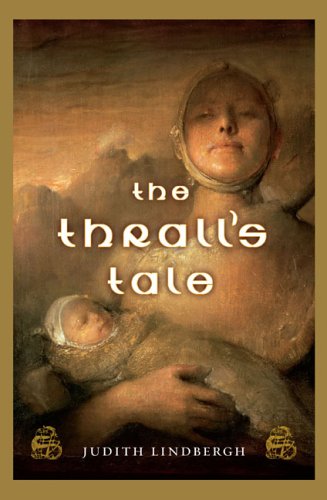The Thrall’s Tale
The Thrall’s Tale is Lindbergh’s first novel. It is the story of three women—Thorbjorg the seeress, Katla, a thrall or slave, and her illegitimate daughter, Bibrau—which Lindbergh tells by alternating “chapters” or vignettes with each character speaking in her own voice. These voices become increasingly strident as the tension between the followers of the Norse gods and Christians slowly evolve to a horrific denouement.
The book is set in Greenland beginning in 895 A.D. and traces the Viking settlement of that desolate place. It is peopled by such historical figures as Leif Eiriksson and Eirik Raude, the new “Green-land,” so named so that Eirik could con his people into leaving their homes in Iceland and settling the frozen wilderness. Lindbergh deftly weaves elements of the Vinland Sagas and the language, feel, and pace of the Norse Eddas into the relationship of her fictional characters.
Katla has been brutally raped by Torvard, her owner’s son, and conceives his child. Thorbjorg, a healer who believes in the old Norse ways, nurses Katla through the aftermath of the terrible rape, and ultimately becomes the foster-mother to Bibrau when Katla totally rejects the child. Bibrau, a product of violence and hatred, drives the events in the book as she grows up.
This is not a pretty book by any means; indeed, there is little joy and much harshness. The lack of beauty and warmth in the landscape is analogous to the sheer loathing that is shared by Katla and her daughter. Lindbergh handles the origins of Christianity in Greenland and Vinland beautifully, naturally, and without a heavy hand.
All in all, an excellent read.










